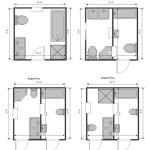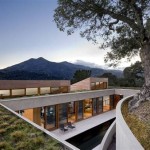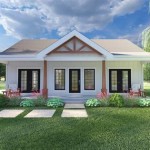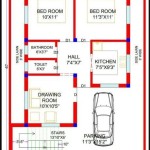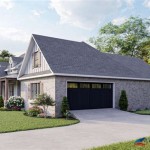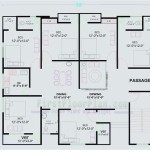House Plans for Sloped Lots with Front Yard Emphasis
Building on a sloped lot presents unique challenges and opportunities in residential architecture. While a level building site allows for straightforward construction, a sloped lot requires careful planning and innovative design strategies. When the slope is located in the front yard, these considerations become particularly crucial, as the design impacts the home's curb appeal and overall aesthetic impression. Optimizing functionality and visual appeal on a sloped front yard demands specialized house plans adapted to the specific contours of the land. This article explores various house plan considerations for sloped lots, focusing on the front yard's distinctive role in the design process.
Understanding the characteristics of a sloped lot is paramount before selecting or modifying any house plan. The degree of the slope, the soil composition, and drainage patterns are critical factors. A steep slope will necessitate different approaches than a gentle incline. Similarly, the type of soil will influence foundation design and landscaping options. Addressing potential drainage issues early in the planning phase will prevent costly problems later on.
Understanding the Challenges and Opportunities of Sloped Front Yards
Sloped front yards present both challenges and opportunities in residential design. The primary challenge is managing the grade change from the street level to the house's entry point. This often requires retaining walls, terracing, or extensive grading, all of which add to the construction cost. Accessibility can also be a concern, particularly for individuals with mobility limitations. Steep slopes may necessitate long staircases or ramps, which can detract from the home's aesthetic appeal if not carefully integrated into the design.
Despite these challenges, a sloped front yard can also offer several advantages. One of the most significant is the potential for enhanced views. Elevating the house above street level can provide panoramic vistas not available on a flat lot. A sloped yard can also create a sense of privacy, shielding the home from street traffic and pedestrian activity. Furthermore, a well-designed sloped front yard can significantly enhance the home's curb appeal, creating a visually interesting and dynamic landscape.
Embracing the natural topography of the land rather than attempting to flatten it entirely is often the most sustainable and aesthetically pleasing approach. This involves working with the existing contours to create a design that complements the landscape, rather than fighting against it. This approach minimizes soil disturbance, preserves natural drainage patterns, and reduces the need for extensive retaining walls.
The orientation of the house on the lot is another critical factor. This determines the amount of sunlight the house receives and the exposure to prevailing winds. In colder climates, orienting the house to maximize southern exposure can reduce heating costs. In warmer climates, shading the house from the afternoon sun can lower cooling costs. Careful consideration of these factors can significantly improve the home's energy efficiency and overall comfort.
Key Design Elements for House Plans on Sloped Front Yards
Several key design elements are crucial for successfully integrating a house plan into a sloped front yard. These include foundation design, entry design, landscaping, and retaining wall construction. Each of these elements must be carefully considered in relation to the slope of the land and the overall aesthetic goals.
Foundation design is particularly critical. Depending on the slope's severity, options may include a walk-out basement, a daylight basement, or a raised foundation. A walk-out basement is suitable for steeper slopes, allowing for direct access to the backyard from the basement level. A daylight basement is similar but typically has smaller windows and less direct access. A raised foundation elevates the house above the ground, creating a crawl space underneath. The choice of foundation type will depend on the specific characteristics of the lot and the homeowner's preferences.
The entry design is crucial for creating a welcoming and accessible approach to the house. This may involve a series of steps, a ramp, or a combination of both. The design should be visually appealing and integrate seamlessly with the surrounding landscape. Wide, shallow steps are generally more comfortable to navigate than steep, narrow steps. Ramps should comply with accessibility standards and have a gentle slope. Handrails are essential for safety, particularly in areas with steep slopes or icy conditions.
Landscaping plays a vital role in enhancing the beauty and functionality of a sloped front yard. Terracing can create level planting areas and help to control erosion. Native plants are often the best choice, as they are adapted to the local climate and soil conditions. Groundcover plants can help to stabilize slopes and prevent weeds. Trees and shrubs can provide shade and privacy. A well-designed landscape can significantly enhance the home's curb appeal and create a welcoming outdoor space.
Retaining walls are often necessary to stabilize slopes and create level areas. They can be constructed from a variety of materials, including concrete, stone, brick, and timber. The choice of material will depend on the aesthetic goals and the structural requirements. Retaining walls should be properly engineered to withstand the pressure of the soil behind them. Adequate drainage is essential to prevent water buildup behind the wall, which can lead to failure. Integrating retaining walls into the landscape design can create a visually appealing and functional feature.
Specific House Plan Considerations for Sloped Front Yards
When selecting or modifying a house plan for a sloped front yard, several specific considerations are crucial. These include the placement of the garage, the design of outdoor living spaces, and the integration of the house with the surrounding landscape.
The placement of the garage can significantly impact the home's curb appeal and functionality. If the slope is gentle, the garage may be located at street level, with a driveway leading up to it. If the slope is steeper, the garage may be located below the main level of the house, with access from the basement. Another option is to locate the garage to the side of the house, with a gently sloping driveway leading to it. The choice of garage placement will depend on the specific characteristics of the lot and the homeowner's preferences.
The design of outdoor living spaces is another important consideration. A sloped front yard can be an excellent location for a patio or deck, providing stunning views and a sense of privacy. Terracing can create level areas for outdoor furniture and landscaping. A pergola or awning can provide shade and protection from the elements. Integrating outdoor lighting can enhance the ambiance and extend the usability of the space into the evening.
Integrating the house with the surrounding landscape is crucial for creating a harmonious and visually appealing design. This involves using natural materials, such as stone and wood, to complement the landscape. The color palette should be chosen to blend in with the surroundings. Landscaping should be used to soften the lines of the house and create a sense of connection with the natural environment. By carefully integrating the house with the landscape, it is possible to create a home that feels like a natural extension of its surroundings.
In addition to these specific design considerations, it is essential to consult with a qualified architect or engineer who has experience designing houses on sloped lots. They can provide valuable insights and guidance on the best approach for your specific situation. They can also help you to navigate the permitting process and ensure that your house meets all applicable building codes and regulations.
Careful planning and thoughtful design are essential for creating a beautiful and functional home on a sloped front yard. By addressing the unique challenges and opportunities presented by the slope, it is possible to create a home that is both aesthetically pleasing and practical. A well-designed sloped front yard can significantly enhance the home's curb appeal, provide stunning views, and create a welcoming outdoor space.
Ultimately, the success of a house plan on a sloped front yard depends on its ability to harmonize with the natural environment. By respecting the existing topography and utilizing innovative design strategies, it is possible to create a home that is both beautiful and sustainable.

Hillside And Sloped Lot House Plans

Sloping Lot House Plan 1162

Hillside And Sloped Lot House Plans

Barndominium With Walkout Basement Plans Blog Floorplans Com

Best Simple Sloped Lot House Plans And Hillside Cottage

Sloped Lot House Plans Walkout Basement Drummond

Walkout Basement House Plans To Maximize A Sloping Lot Houseplans Blog Com

A Home Built On Slope Interior Design Inspiration Eva Designs

Shady Slope Rustic Home Plan 126d 1005 House Plans And More
_m.webp?strip=all)
Sloping Lot Contemporary Style House Plan 9960 Nadal


